Family : Gobiesocidae

Text © Giuseppe Mazza

English translation by Mario Beltramini
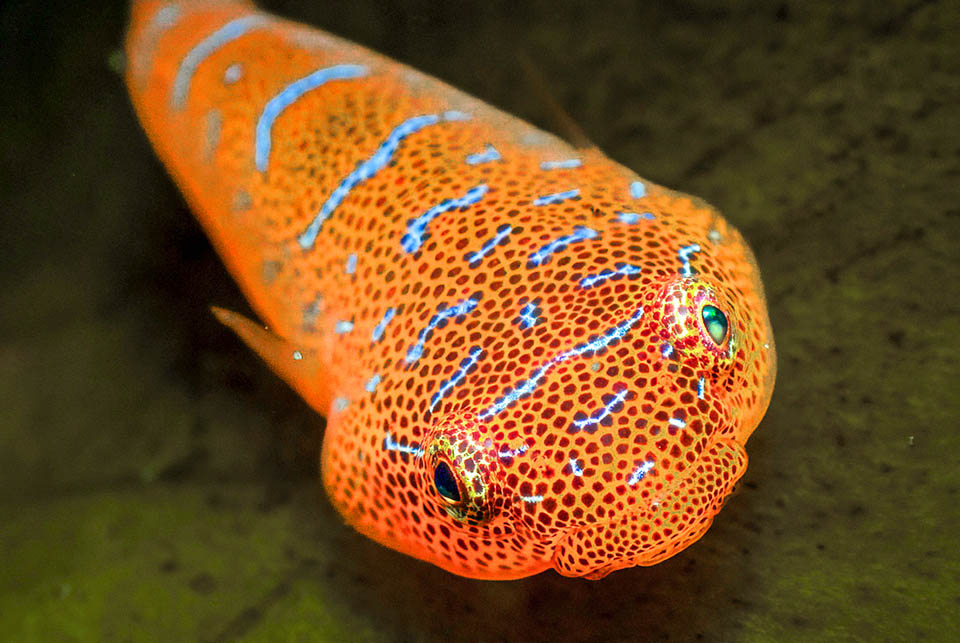
Similar to a snail as stated by the scientific name, Cochleoceps orientalis is a Blenniiformes endemic to south eastern Australia © Steve Smith
In the order of the Blenniiformes, belonging to the class of the Actinopterygii, the ray-finned fish, there are not only false cleaners, impostor fish such as Aspidontus taeniatus, who imitates the well-known labrid Labroides dimidiatus and then shows off conspicuous sabre-like teeth for tearing off shreds of flesh to the clients, but exist also honest cleaners like the Eastern cleaner cling-fish, Cochleoceps orientalis Hutchins, 1991.
It is inserted, even is not all taxonomists are in agreement, in the suborder of the Gobiesocoidei and in the family of the Gobiesocidae, the so-called Clingfish, because they stick to the algae, to the rocks or to the fish do clean with the modified pelvic fins that form with the adjacent tissue one or more suckers, something like the Gobiidae, do, but with different structures.
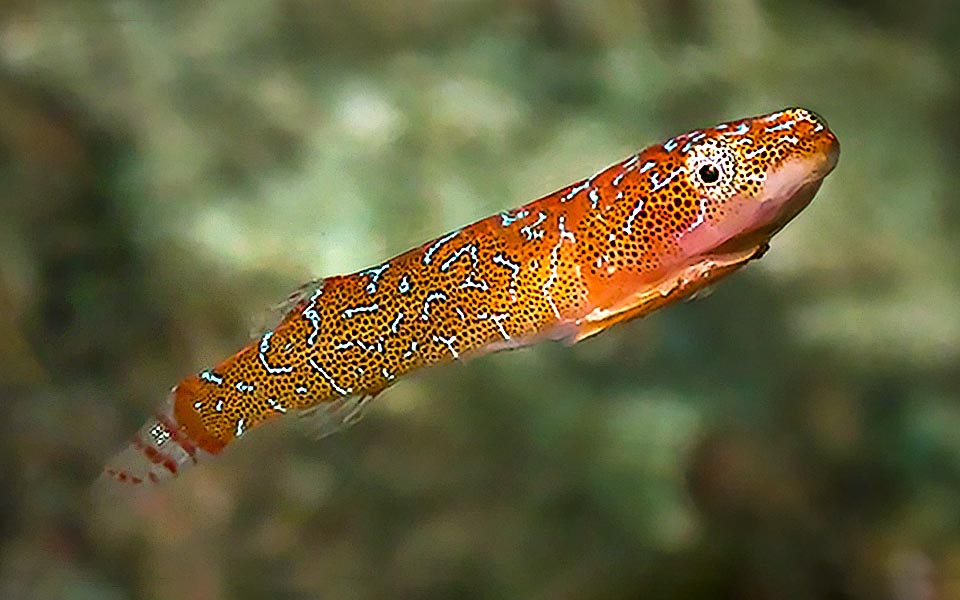
At maximum 5,5 cm long, the Eastern Cleaner Clingfish has a double sucking disc, here visible in profile in the first thorax part. It comes, similarity to the Gobiidae, from the merging of pelvic fins united below by a flesh fringe of hexagonal flat tiny cells, formed by microscopic bristle for getting a perfect adhesion to all supports © Brian R Mayes
As we have seen for Alticus saliens, inserted in the Blenniidae, also among the Clingfish are present strongly amphibious species living in the tidal zone and may survive out of water, even three-four days, absorbing the oxygen from the air via the gills moistened by the spray.
Some, with another similarity to the Gobiidae, find shelter under the sea urchins like Ginsburgellus novemlineatus nibbling at their pedicels, and is rightly because of alle these analogies, without forgetting the Caribbean cleaner goby Elacatinus evelynae, that was born the name Gobiesocidae assigned to the family.
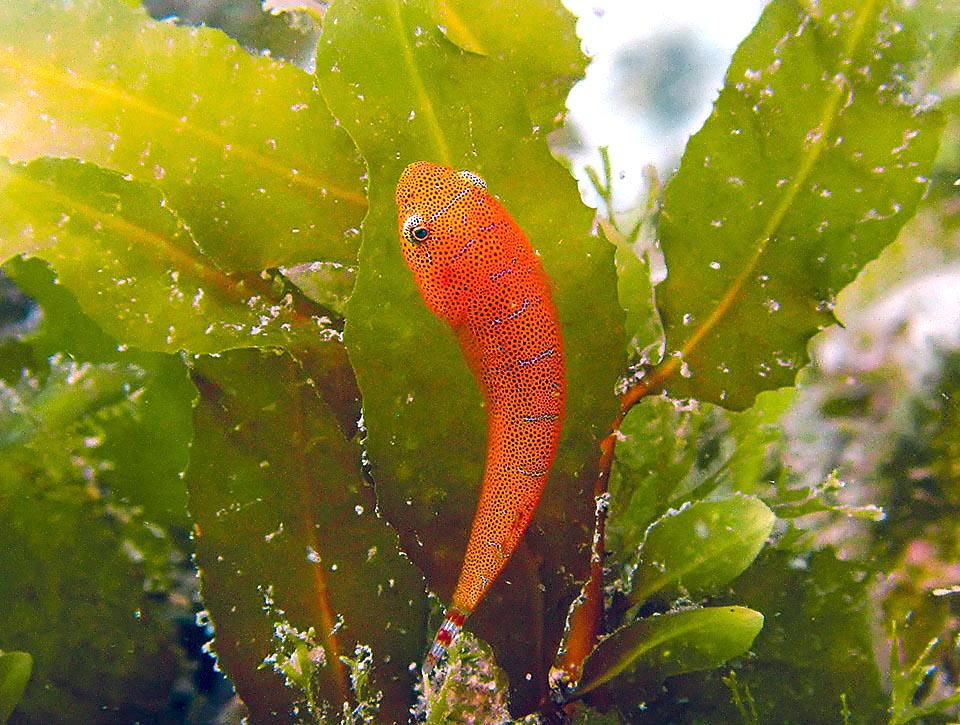
Cochleoceps orientalis lives hidden among algae or camouflaged between ascidians and sponges in deep waters where are its cleaning stations © Gina
The genus Cochleoceps originates from the Greek “kochlea”, snail-shaped, and “kefáli”, head, due to the look of this cleaner fish, whilst the specific term orientalis refers in Latin to their geographical location, towards the east, along the Australian coats.
Zoogeography
In fact, Cochleoceps orientalis is endemic to south-eastern Australia, from Seal Rocks in New South Wales to Mallacoota in Victoria State.

Omnivorous, besides the parasites it takes from the skin and the gills of fish, it feeds on algae fragments, sponges and ascidians © Josh Moloney
Ecology-Habitat
Cochleoceps orientalis lives demersal between 3 and 40 m, in temperate waters with values included between 16,4 and 23,3 °C, often on the fronds of Ecklonia radiata, its choice alga.
In fact, it swims as little as possible to avoid being noticed by the predators, sheltering among the fronds of this plant it chases in leaps, in the waves movement, on the less visible side.
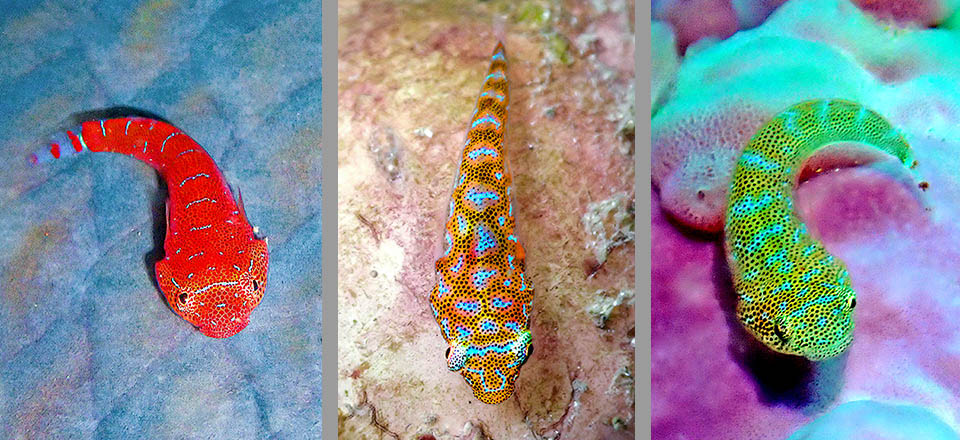
The elegant mimetic livery, going from intense orange, but cryptic in depth, to greenish-yellow. On the back and the sides stand out several iridescent blue lines. From left © kateahmad © Harry Rosenthal © Harry Rosenthal
It can be also found in deeper waters, camouflaged between ascidians and sponges, colourful landmarks, easy to memorize by the clients of their cleaning stations.
Morphophysiology
Cochleoceps orientalis has a maximum length of 5,5 cm. The elongated fusiform body, scaleless, is protected by a mucus, as often occurs in the Blenniiformes.

Here at work while frees scrupulous from the parasites bony and cartilaginous fish. From top to left © Lawrence Hylton © grahammcmartin © Robin Laws-Wall
However, unlike the Gobiidae, the dorsal fin has no spines but only 5-6 soft rays, and so are the others, like the anal with 4-6 rays, the pectorals with 21-24 rays and the rounded caudal.
The pelvic fins, merged together, create a double sucking disc of medium size with a fleshy fringe in the rear part born from small hexagonal flat little cells formed by microscopic bristles for a perfect adhesion to the support.
The livery, conspicuous but cryptic, goes from the intense orange that, as known, disappears with the fading of the light in depth, to greenish yellow.
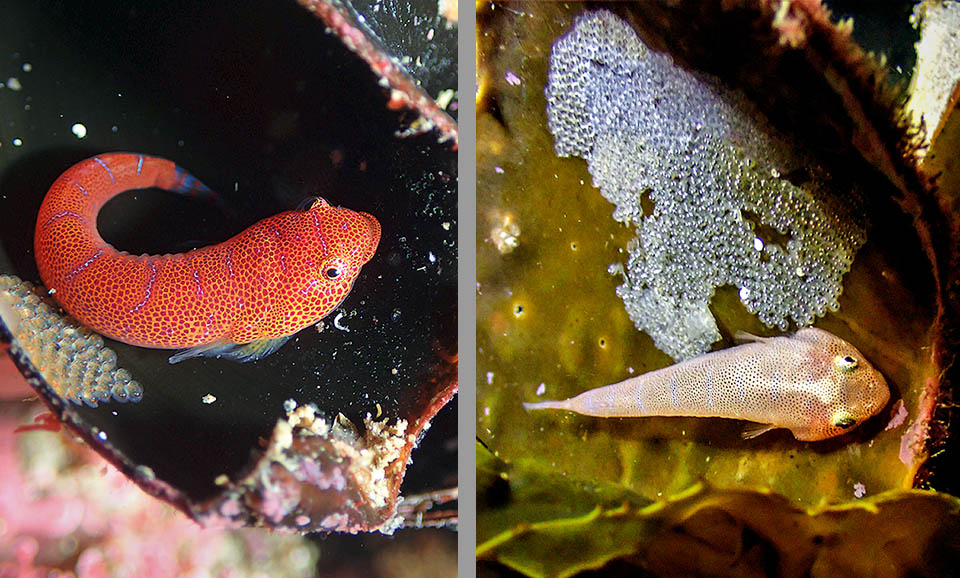
Two nests of eggs on the lower pagina of algae. Males of Cochleoceps orientalis defend them until hatch, and also females do not abandon them © Naomi Springett (left) © Peter (right)
It is adorned with countless dark red spots, whilst on the back and on the sides stand out numerous iridescent blue lines, mainly arranged perpendicular to the length of the body.
Ethology-Reproductive Biology
Cochleoceps orientalis is omnivorous. In addition to the parasites it finds on the skin and the gills of the bony and cartilaginous fish, removes the remainders of food between their teeth, preys on the small benthic crustaceans and nibbles on the algae, nibbling while waiting for customers ascidians and sponges.
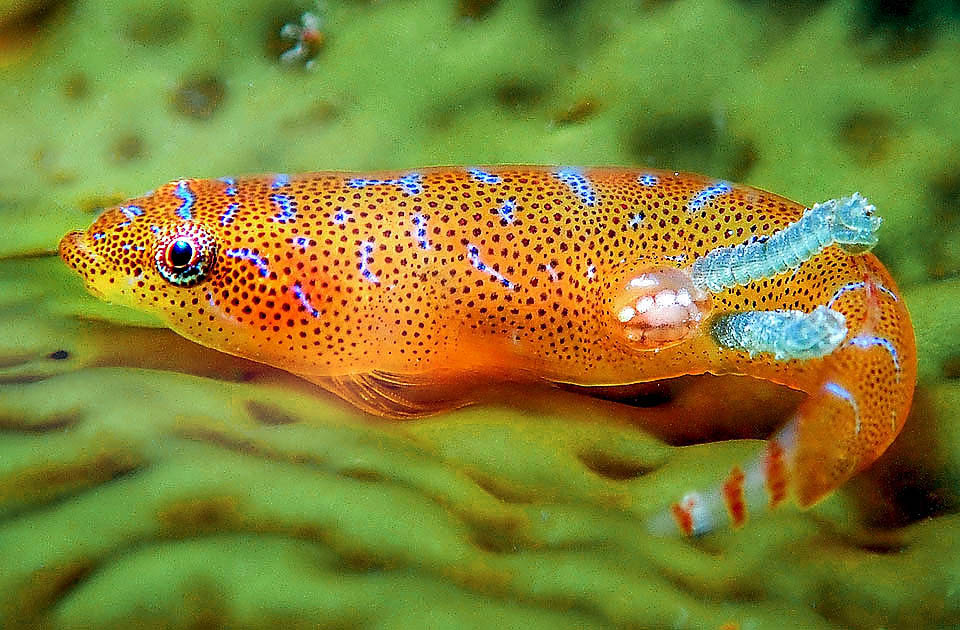
Also these small surgeons get sick. Here a Cochleoceps orientalis with two parasites having even laid the eggs. But its colleagues will intervene © kim dinh
It reproduces in pairs gluing the eggs on the hidden side of the algae, a moving nest that like all Blenniiformes is bravely surveyed by the male, and also the female does not abandon it, keeping close waiting for hatching.
The trend of the populations is unknown but in various locations the Eastern cleaner-clingfish is very common. The resilience of the species is excellent, with a possible doubling of the populations in less than 15 months, and the fishing vulnerability, very low, marks only 10 on a scale of 100.
Since 2024 Cochleoceps orientalis appears therefore as “LC, Least Concern”, in the IUCN Red List of the endangered species.
→ For general information about FISH please click here.
→ For general information about BONY FISH please click here
→ For general information about CARTILAGINOUS FISH please click here.
→ To appreciate the BIODIVERSITY of BONY FISH please click here.
→ To appreciate the BIODIVERSITY of CARTILAGINOUS FISH please click here.
